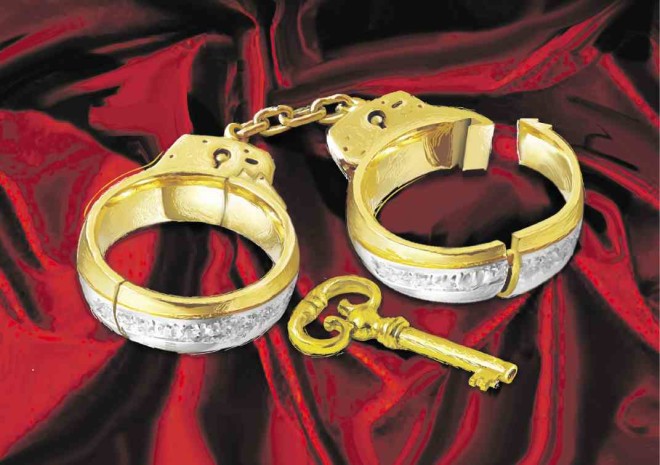
How far will a budget of P500,000 go when planning a wedding?
Not very far, said Kitten Zapata, editor in chief of Wedding Essentials Magazine, a quarterly wedding resource for the A, B and C market that keeps tab of local wedding suppliers.
It’s “good enough,” said Zapata, and will cover the reception venue, the use of lights and sound, some alcoholic beverages, food for 100 to 150 guests and maybe a photo booth.
But scratch the wedding gown and the bridesmaids’ outfit, the groom’s suit or barong, and the services of the photographer, videographer, hair stylist, makeup artist and florist. Forget about the wedding rings and the fee for use of the church. They cost extra.
The usual rate for a church without airconditioning is about P15,000 for a 1½-hour service. For grander churches inside gated villages, expect to shell out as much as P30,000, and an optional cash gift for the officiating priest. You also need to book the church at least a year in advance because of high demand.
“Of course, you can get married with a P200,000 budget, but that’s bare bones,” Zapata said. “It just doesn’t compare to a P4-million wedding, which seems to be the goal of many young couples these days,” she added.
A custom wedding dress by a designer who has yet to make a name starts at P100,000, while the rates for an in-demand videographer-photographer can be as much as P250,000, with add-on costs for a camera drone, same-day edit (with footage of church rites shown at the reception), the lookback video (the compilation of the couple’s childhood photos), and the prenup and postnup photo shoots.
Aspirational
Postnups, a new trend, are one-day shoots done while the couple is on honeymoon. If the scenic locale is abroad, the couple pays for the photographer’s airfare and accommodations, said Zapata.
“Weddings are highly aspirational among the younger set,” she added. “They have a dream wedding in mind so they really save and go all out. They consider it a once in a lifetime (experience), so they want the best. They’d rather put the wedding off if they’re not yet financially ready.”
Zapata, however, noted that it’s not unusual for Filipino parents to still foot the bill. “But unlike the previous generation, these millennials have a say on the matter even if they’re not the ones paying.”
A wedding’s cost can vary depending on the priorities of the couple. If the bride doesn’t mind wearing a ready-to-wear gown, she could shell out as little as P35,000 for a local brand, or up to P70,000, the base price of an international RTW label. Conversely, she could splurge on a custom designer dress starting at P200,000, and have her entourage’s gowns made by an unknown designer or seamstress.
It’s the extras that can be quite a burden on a couple’s budget, said Zapata. Makeup artists can charge rates starting at P25,000 (for the bride plus one), up to P40,000 for top-tier professionals.
Reception venues or hotels often include the bridal car in the package they offer, while churches usually take charge of the basic décor. But if the couple wants to hire an event stylist, that’s easily P50,000 more. Wedding planners or coordinators meanwhile charge from P30,000 for the basic one-day service (covering the church rites and reception venue). The rates of more popular wedding planners start at P60,000 for a similar package.
Popular florists charge around P35,000, a rate that could include bouquets for an entourage of 12 to 14. If the bride wants imported flowers like tulips, Ecuadorian roses or peonies, set aside an additional P20,000.
Musicians also cost extra, while a popular event host will charge from P30,000 to P35,000. “That’s why couples on a tight budget just ask friends or relatives to emcee the event,” Zapata said.
Astronomical costs
But the astronomical costs of a wedding has not deterred young couples, the bridal magazine editor said, adding that “the evidence is (contrary to)” the perception that there are fewer weddings in the past few years.
In fact, Zapata added, there are more wedding suppliers than ever, with bridal fairs organized by different groups every month. “That’s just in Metro Manila. Provincial cities like Cebu have their own.” And so do some provinces that have their own regional bridal fairs.
It’s a continuously growing market, where the lower-end suppliers have maintained their rates while the higher-end ones now charge even more, said Zapata, whose magazine has kept tabs of the local bride scene these past 12 years.